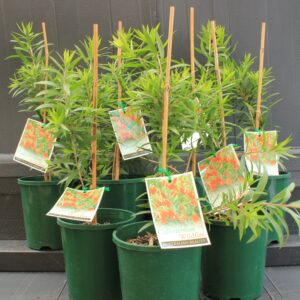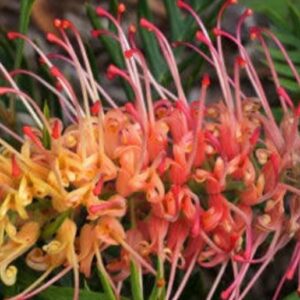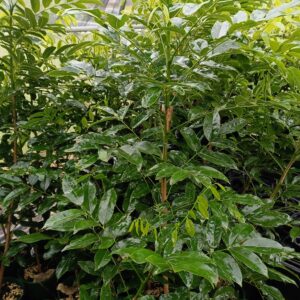Summer Rains mean Autumn Gains
Planting native plants in the summer, especially after a rain, offers several significant benefits that can enhance the success of your garden and help your plants thrive in their new environment. When rain showers soak the soil, they create an ideal setting for planting, making the process easier and more beneficial for both you and the plants.
Easy Hole Preparation
One of the first advantages of planting after rain is the ease with which you can prepare the planting holes. Wet soil is typically softer and easier to work with than dry soil, meaning you won’t have to struggle as much to dig the holes. The rain also helps break up compacted soil, which is often a challenge when planting in drier conditions. This means you can create the right-sized hole for your native plant with minimal effort, reducing the stress on both you and your back!
Moisture Retention and Reduced Root Shock
Another major benefit of planting after rain is the moisture content in the soil. Newly planted native plants require consistent moisture, particularly during their establishment phase. When the soil is already moist, it creates a conducive environment for the plant’s roots to establish themselves quickly and efficiently. This moisture retention reduces the likelihood of root shock, a common issue where the plant’s roots struggle to take hold because the surrounding soil is too dry or inhospitable. By planting when the ground is moist, you give your plants a better chance of settling into their new environment, leading to healthier growth.
Additionally, native plants are often more drought-tolerant than non-native species. However, even drought-tolerant plants need a steady supply of water during their first few weeks to establish a strong root system. Rain-soaked soil helps meet this need, ensuring the plants can grow and expand their roots without experiencing undue stress.
Establishment Before Winter
Another key advantage of planting native species in the summer after a rain is that the plants have ample time to establish themselves before winter sets in. Native plants are typically adapted to the local climate and conditions, meaning they are well-equipped to survive winter temperatures. However, they still need a few months to root and become established before they face the harshest part of the year. Planting after a summer rain ensures the plants have enough time to settle in, even if the growing season is shorter.
By the time colder temperatures arrive, the plants will have developed a strong root system that helps them survive and thrive through the winter months. This early establishment can lead to healthier plants come spring, as they will have the foundation needed to begin their growth cycle as soon as temperatures warm up again.
Enhanced Autumn Growth
Finally, planting native plants after a summer rain can trigger an autumn growth spurt. Native species, especially those adapted to regions with distinct seasons, often experience a final burst of growth before the cold weather sets in. The moisture from the rain gives the plants the resources they need to put on this growth spurt, allowing them to strengthen their roots and produce new foliage before they go dormant for the winter. This can result in a more vibrant and healthy plant come the following growing season, providing you with a lush, thriving garden.
In conclusion, planting native plants in the summer, after a rain, offers several key advantages. The ease of hole preparation, moisture retention, reduced root shock, and enhanced autumn growth all contribute to healthier, stronger plants that can thrive in your garden for years to come.




